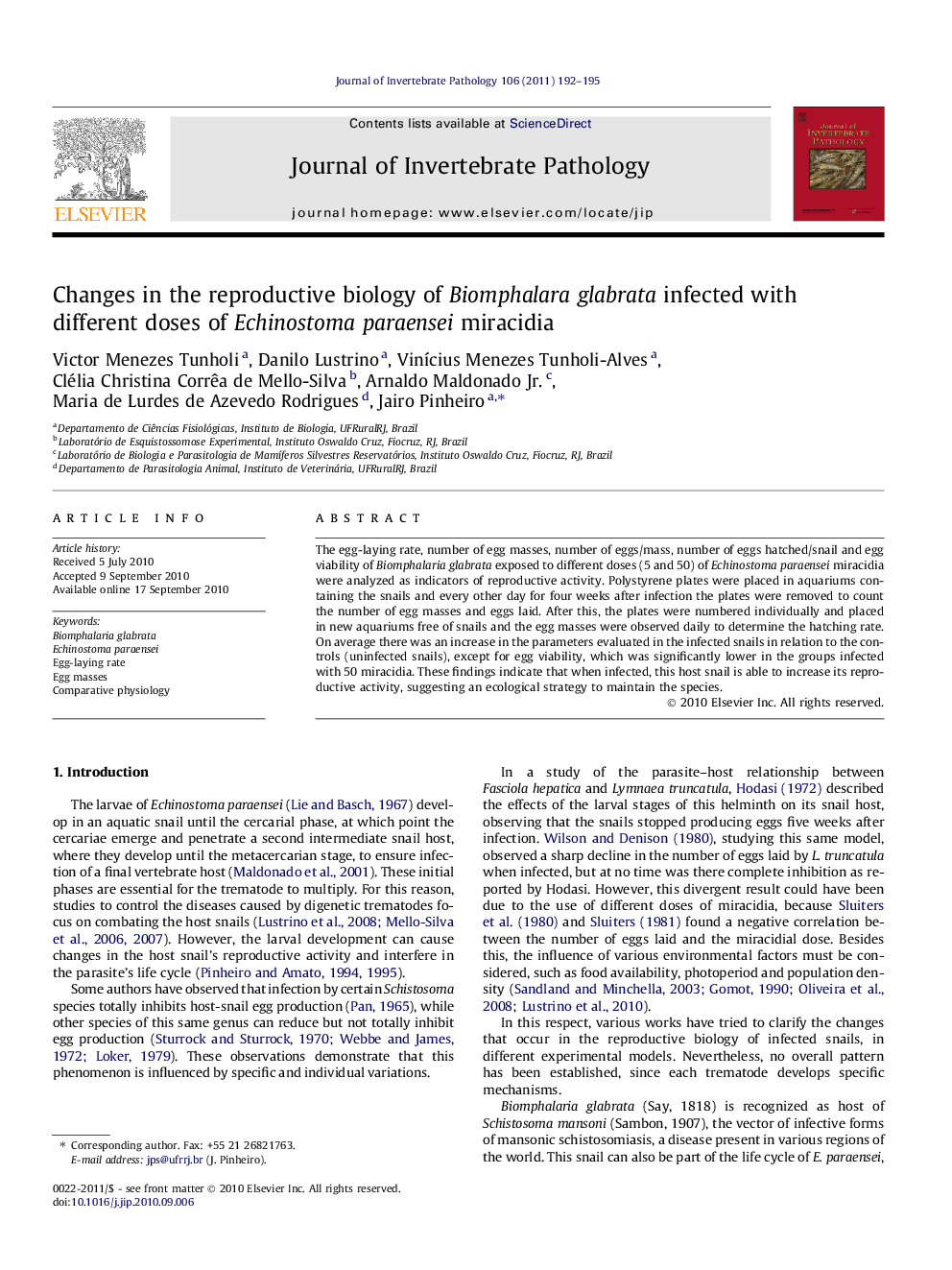| Article ID | Journal | Published Year | Pages | File Type |
|---|---|---|---|---|
| 4558082 | Journal of Invertebrate Pathology | 2011 | 4 Pages |
The egg-laying rate, number of egg masses, number of eggs/mass, number of eggs hatched/snail and egg viability of Biomphalaria glabrata exposed to different doses (5 and 50) of Echinostoma paraensei miracidia were analyzed as indicators of reproductive activity. Polystyrene plates were placed in aquariums containing the snails and every other day for four weeks after infection the plates were removed to count the number of egg masses and eggs laid. After this, the plates were numbered individually and placed in new aquariums free of snails and the egg masses were observed daily to determine the hatching rate. On average there was an increase in the parameters evaluated in the infected snails in relation to the controls (uninfected snails), except for egg viability, which was significantly lower in the groups infected with 50 miracidia. These findings indicate that when infected, this host snail is able to increase its reproductive activity, suggesting an ecological strategy to maintain the species.
Graphical abstractThe snail host B. glabrata when infected with E. paraensei increases the reproductive efforts, as an ecological strategy to compensate the fecundity loss, but the viability of the eggs is reduced..Figure optionsDownload full-size imageDownload as PowerPoint slideResearch highlights► Infection by E. paraensei alters reproductive biology of B. glabrata. ► Infection by E. paraensei induces fecundity compensation in B. glabrata. ► Biomphalaria glabrata infected with E. paraensei exhibits a compensation fecundity process.
